“Organic Matters…” What Select Women Artists Are Saying About the Environment
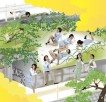
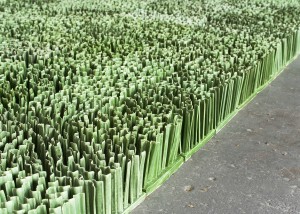
Just opening at the National Museum of Women Artists (NMWA) in Washington, DC, through September 13th, is the show called “Organic Matters—Women to Watch 2015.” From the exhibition catalog: “Collectively, their work addresses modern society’s complex relationship with the environment, ranging from concern for its future to fear of its power.”
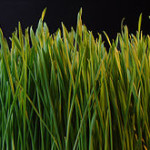 In the installation shown left is a fired ceramic depiction of grasses called turf grass in a lawn. To the right, a closeup of the actual turf grass. When grown in a large area without the presence of other plants, turf grass is considered a monoculture.
In the installation shown left is a fired ceramic depiction of grasses called turf grass in a lawn. To the right, a closeup of the actual turf grass. When grown in a large area without the presence of other plants, turf grass is considered a monoculture.
Arkansan artist Dawn Holder, an assistant professor of art at the University of the Ozarks, says about the piece: “Monoculture investigates the lawn in its dual nature as “natural” space and cultural signifier using thousands of blades of hand-made porcelain grass. The obsessive and repetative [sic] nature of this work mirrors the suburban obsession with creating the perfect lawn, a cultural ideal that isn’t as green as it seems.” Nice play on words.
“The lawn is of particular interest to me because of its multivalent nature,” she says. “It is a ‘natural space’ in that it is comprised of plants and landforms, yet the lawn is a wholly artificial construct, a highly controlled space requiring labor, chemicals, and specialized equipment to maintain.” Water, typically potable, also comes to mind.
Taken from the show’s statement “…concern for [the environment’s] future,” Holder’s piece may also bring to mind the cost in gallons of potable water lost to the maintenance of turf grass lawns. (How much water was described in my post on artificial turf a couple of weeks ago.)
Also possible is a statement about what a large area of grass in front of a suburban house may mean to its owner and convey to others: a kind of aristocracy. An expanse, as in an estate. Or, a kind of lock-step of human conformity, aspiration and uniformity, perhaps?
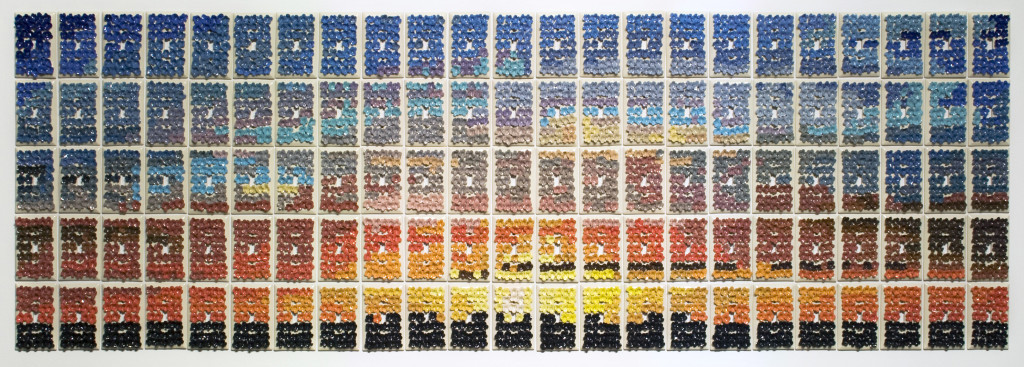
Here’s a more recent work. This one’s not in the show at the NMWA, but may fit with the statement about concern for the environment. We may rather wish it to mean something like a paen to nature (unharmed).
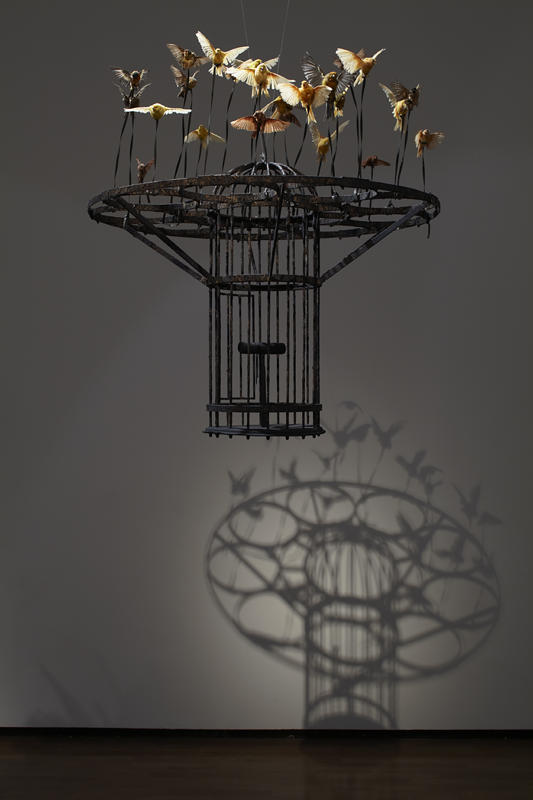
Another artist in the show is Polly Morgan, a Brit based in London.
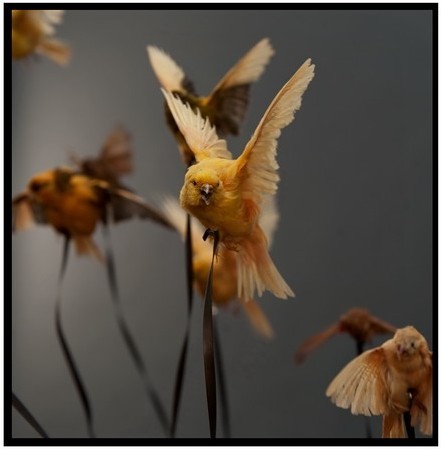 About this rather raw piece she states: “Taxidermy is an ultimately futile effort to harness nature; it allows us to manipulate and control the body of an animal in a way we would struggle with, or, in my case, would not wish to in life. Seeing these birds outside of, but harnessed to, the cage presents a paradox: who is free, passenger or bird?”
About this rather raw piece she states: “Taxidermy is an ultimately futile effort to harness nature; it allows us to manipulate and control the body of an animal in a way we would struggle with, or, in my case, would not wish to in life. Seeing these birds outside of, but harnessed to, the cage presents a paradox: who is free, passenger or bird?”
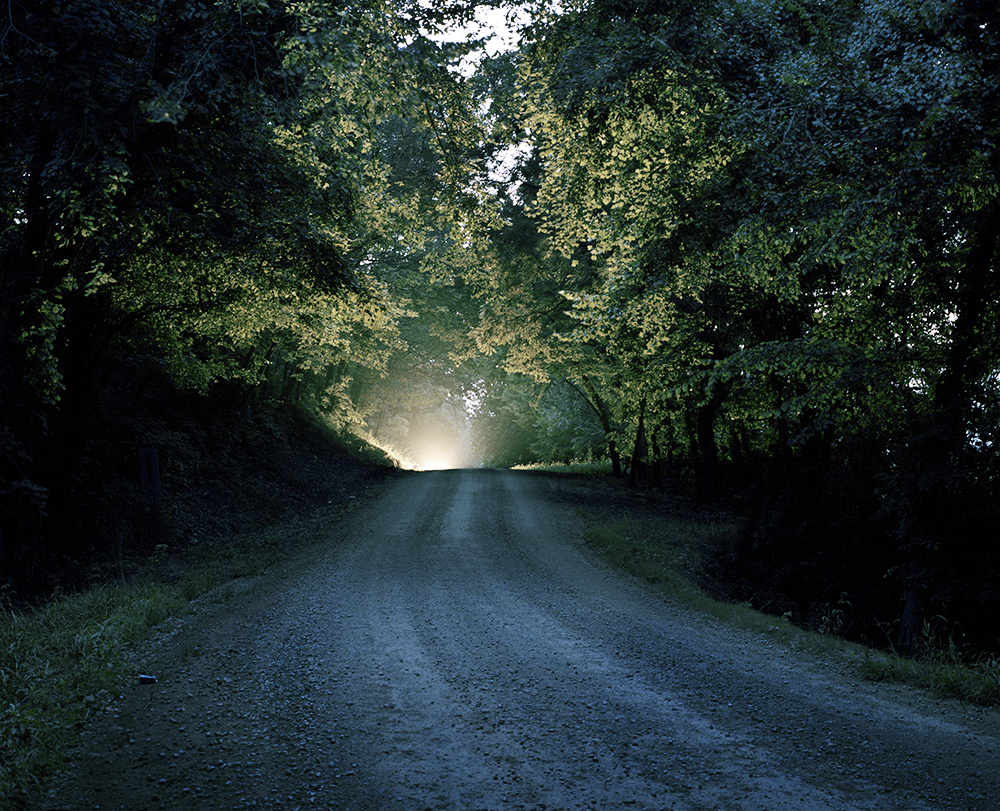
Missouri artist Lara Shipley says about her fine art photographic work depicted in this piece: “The ‘Devil’s Promenade’ series is about the relationship between rural culture and landscape, specifically Ozark culture in Southern Missouri and Northern Arkansas. I find it fascinating how certain physical locations become the settings for specific stories, and enable you to reflect on their significance to your life.”
Another exhibitor in the show are Italian fine art collaborators, Goldschmied & Chiari.
Can you find any inference to French Impressionist Claude Monet in this piece?
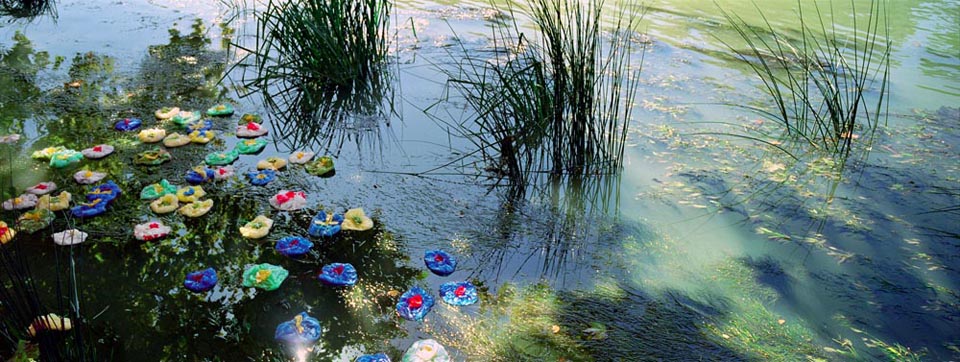
“At the time we made these works, we were influenced by post-feminist theories and their questioning of what ‘natural,’ ‘cultural,’ and ‘artificial’ were. That’s why we started representing an artificial nature, using polluted landscapes and the common tool of plastic bags to show our personal view of flowers.” What a wonderful depiction of human carelessness and natural form in life-sustaining water turned suspicious in color.
The exhibit may be seen online as well as the museum in northwest DC. (There may be a p.p.s. after seeing the show at NMWA.)